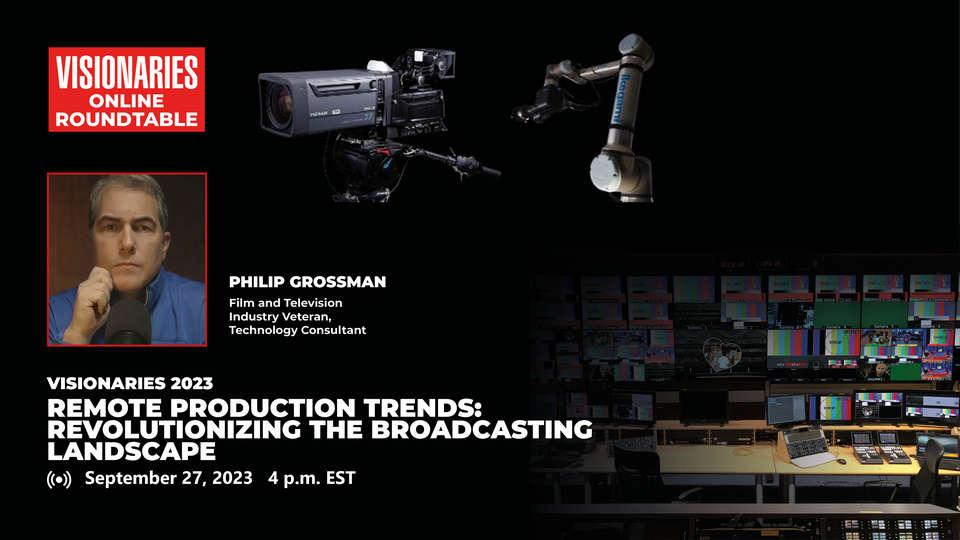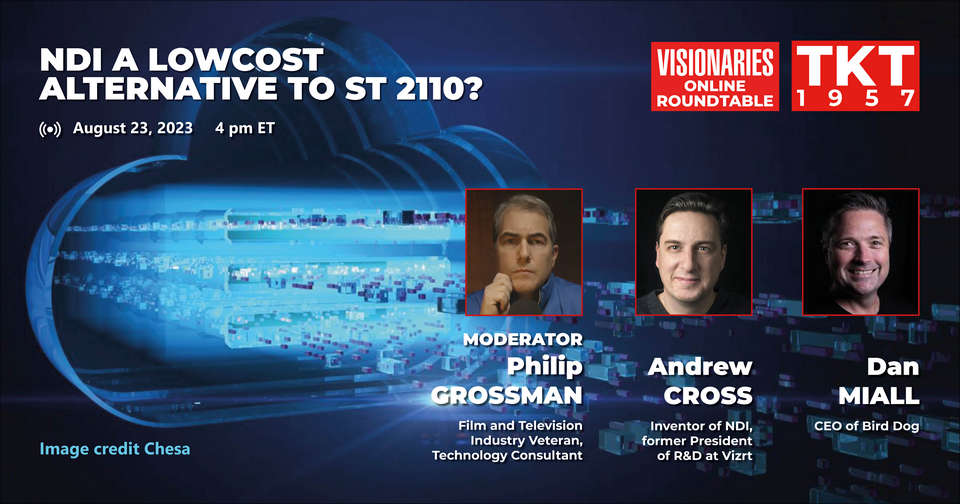Broadcast technology industry titans Philip Grossman, Andrew Cross and Dan Miall envision the future in the Visionaries online roundtable.
Philip Grossman: Good morning, good afternoon, and good evening. Welcome to Philip Visionaries!
I must admit that I’m really excited about today’s guest. I have been learning a lot about NDI and have spent a significant amount of time in the SMPTE 2110 world. I’m truly fascinated by this. Today, we have two of the leading experts in NDI. First, we have Andrew Cross, the former CTO and CEO of NewTek and, of course, the inventor of NDI. He also holds a PhD in computer vision and image processing from the University of York. Joining him is Dan Miall, an industry leader in NDI-based solutions for broadcasters and the live event industry. Welcome to both of you, and thank you for being on the show.
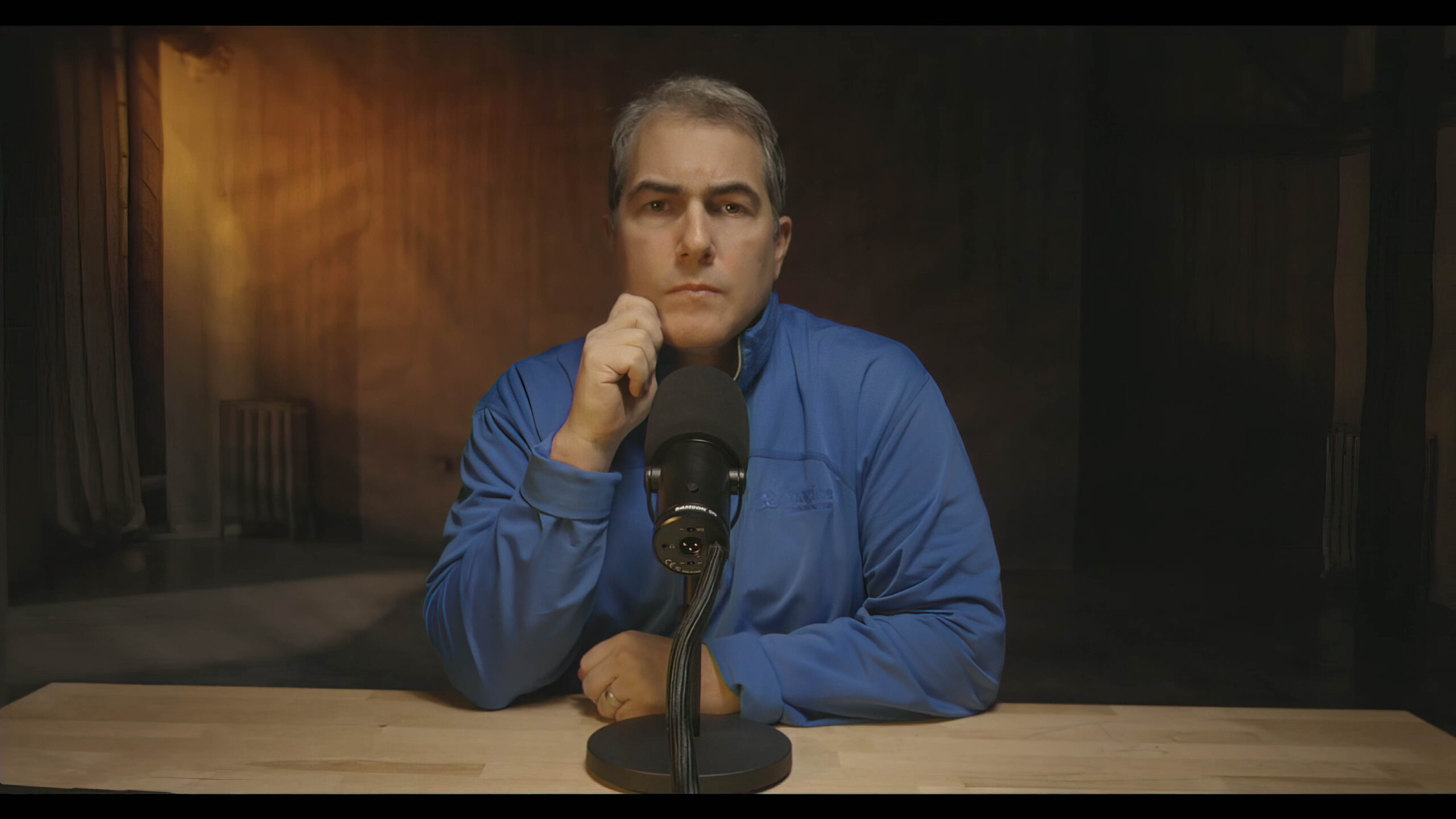
Andrew: Thank you for inviting us.
Dan: Thank you for having us.
NDI: Transforming the World of Video Production
Philip: Thanks. Let’s start with the main topic here. Andrew, can you shed some light on the history of NDI and explain what NDI is for those who might not be familiar with it?
Andrew: Oh, my goodness, I could talk for an hour about that.
Philip: Give us the 10-minute synopsis, then.
Andrew: What we observed was the increasing role of computers in production. Software on these computers is now the backbone of all video production. However, the challenge of transporting video between these computers remained unsolved. Our primary aim with NDI was to democratize video, ensuring that anyone, anywhere, could utilize video. We didn’t design NDI exclusively for broadcast facilities; our vision was that any room in any office building worldwide with an internet jack would be wired for video. This vision drove NDI’s development. At NewTek, we had developed the technology that underpinned NDI long before and initially kept it proprietary, leveraging it to enhance our products. One day, during a walk, I realized that this technology should be accessible to everyone. The very next day, I convened a meeting with key company stakeholders and proposed that we share this unique technology with the world. While the idea initially stunned many, this decision paved the way for NDI’s creation. Our mission with NDI has always been to empower anyone wanting to use video, and I believe we’ve achieved that.
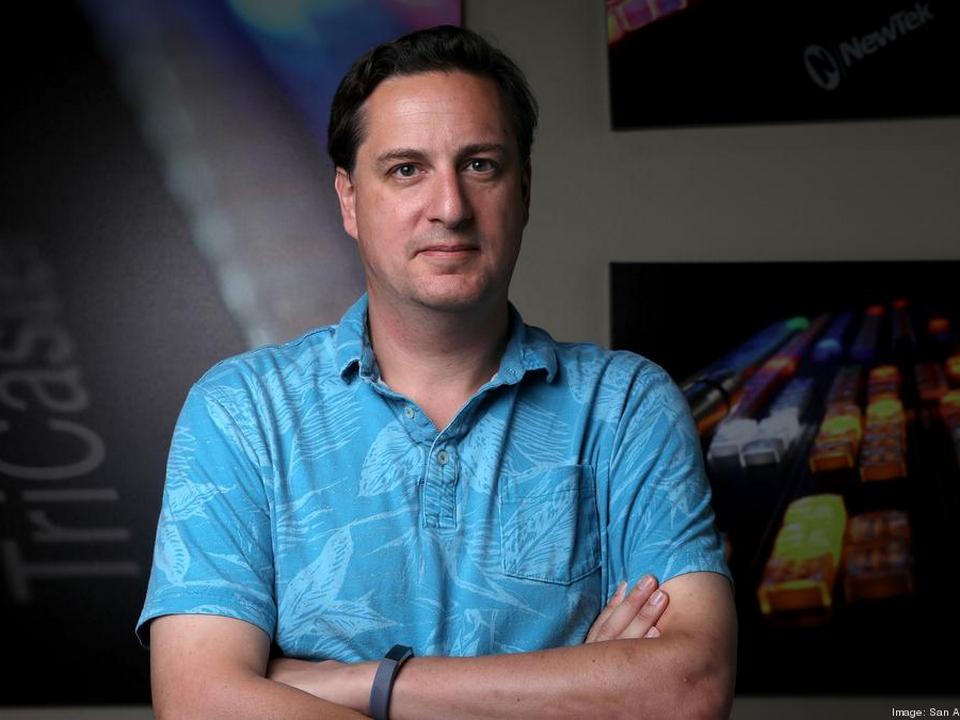
Philip: For those unfamiliar with the term, what exactly is NDI? We understand uncompressed video in the SMPTE 2110 world or SDI, but can you explain NDI from a high-level perspective?
Andrew: A suitable analogy would be to think of how devices are interconnected. For instance, my computer monitor is linked to my computer via an HDMI cable, and my TV is connected to my Fire TV stick in the same way. NDI serves as the ethernet equivalent of this setup. The objective of NDI is to allow any devices to be plugged into a network, facilitating seamless video transport between them. Ideally, with NDI functioning optimally, users shouldn’t have to ponder over IP addresses or gateways. Devices should simply recognize each other. Essentially, our mission was to substitute HDMI cables with ethernet cables, given that almost every building in North America is wired for ethernet.
BirdDog and NDI: Pioneering a New Era in Broadcasting
Philip: Dan, could you shed light on BirdDog’s inception and its association with NDI? What inspired your company’s foundation and its current operations?
Dan: Certainly. Around the time Andrew conceptualized opening up what eventually became NDI, I was running a company named Blonde Robot. While Blonde Robot continues to thrive, I transitioned to BirdDog. We were representing NewTek back then, and I recall a conversation with Andrew, pre-NDI, where I inquired about the emphasis on software for the TriCaster, wondering why there wasn’t a hardware version. Andrew’s belief in software as the future resonated with me, not just for the TriCaster but for all broadcast equipment. As our discussions delved deeper into the advantages of software-based production, it became evident that the technology NewTek was harnessing, which later evolved into NDI, had the potential to revolutionize TV and live video production. Recognizing the transformative power of NDI, I felt the need to transition this technology from computers to tangible hardware, like cameras. This shift is crucial as it’s where the actual interface with the real world occurs. The challenge was determining how to integrate this network connection into devices capturing or playing back video. That’s where BirdDog stepped in and laid its foundation.
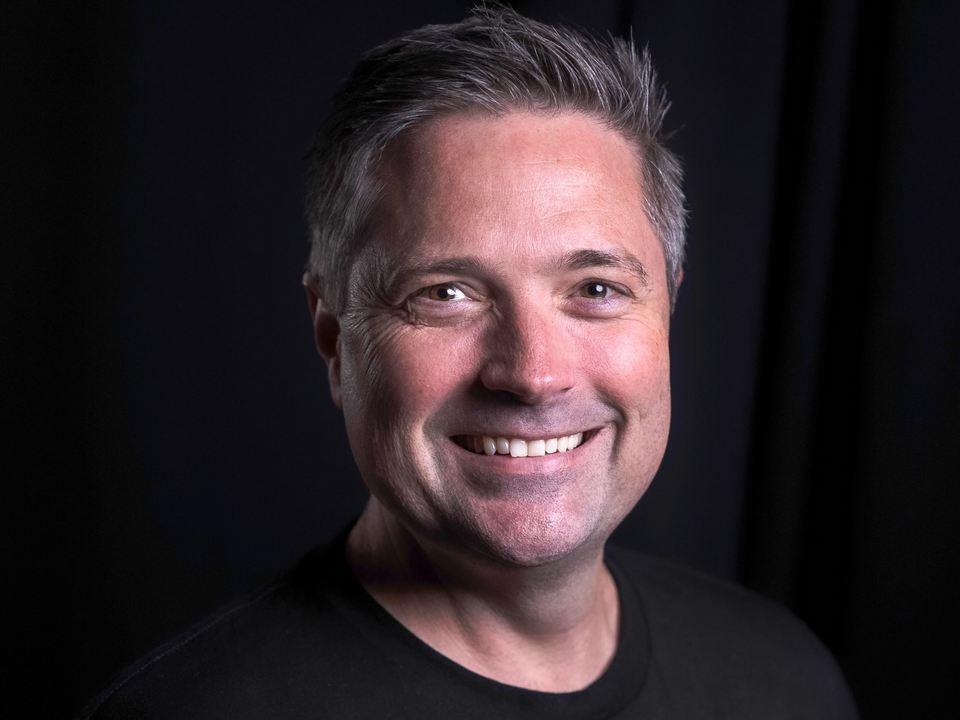
Philip: Before we started, we discussed offline about NDI’s position in relation to SMPTE 2110. Does it replace SMPTE 2110, or is it a complementary technology? How do you and BirdDog perceive NDI, especially in what we humorously termed the “professional video market”? Where do you envision NDI’s role in the broader production landscape?
NDI vs. SMPTE 2110: Complementary or Competitive?
Dan: NDI has a role in numerous areas. Delving a bit deeper into the comparison between SMPTE 2110 and NDI, I slightly differ from Andrew’s perspective. While Andrew sees NDI as a replacement for the HDMI cable, I view SMPTE 2110 in that light – essentially replacing one cable with another. NDI’s uniqueness and scalability stem from its software-defined nature. It’s versatile; for instance, I use NDI on my iPhone to control my camera. With SMPTE 2110, the network’s boundary is typically your capture card or the input to your vision switcher. In contrast, NDI is native to computers, mobile devices, and networks, extending further into the software realm than a typical SMPTE solution. This extension offers an economy of scale, leveraging the full power of computing. As a result, software becomes more accessible for video production. While some applications might seem less “broadcast” in nature, many broadcasters utilize them to meet the increasing content demands.
Philip: Andrew, when you pioneered NDI, I believe it was around the 2015 timeframe, or perhaps earlier?
Andrew: I’m not entirely sure about the exact date. That’s a good question.
Philip: Initially, one of the challenges with transitioning to IP was the significant bandwidth requirement. 10-gig switches weren’t standard then, though they’ve become more commonplace now. Did you anticipate the advancements in processor performance, including GPU, CPU, and network capabilities, to propel NDI to its current prominence?
Andrew: That’s an insightful question. To be honest, for the past five to ten years, CPUs and GPUs haven’t been the bottleneck. They often spend most of their time idle. Modern computing devices boast rapid processing speeds but are often bottlenecked by slower connections, like the bus between the CPU and GPU. However, processing speed hasn’t been a challenge for a while. With NDI, our vision was to enable any device on a network to communicate via video and simplify this process for software developers. Even today, integrating 2110 purely into software isn’t straightforward; you often need an interface card. NDI aimed to make video communication accessible on any device. It wasn’t designed specifically for broadcasters. While 2110 serves broadcasters well, NDI addresses different challenges for a different audience. The fact that broadcasters find NDI useful speaks volumes about the evolving nature of broadcasting. I’ve always seen 2110 and NDI as distinct solutions, each excelling in its domain.
NDI’s Role in Remote Broadcasting: A Game Changer
Philip: Dan, considering the changes in broadcasting and the recent challenges like lockdowns, have you noticed an uptick in NDI adoption or a shift in broadcasting approaches?
Dan: Absolutely. Before the lockdowns, I recall a conversation with a major US broadcaster. They had a 4-5 year plan for transitioning to IP. Just three months later, they were exploring how to run broadcasts from a garage due to the lockdowns. This urgency forced many to reconsider traditional broadcasting methods. As Andrew pointed out, viewers’ demands have evolved. People now seek specific content rather than general broadcasts. To cater to this, broadcasters have had to adapt. The pandemic, in a way, accelerated this shift, making broadcasters reevaluate their business models in line with changing content consumption patterns.
NDI and the Cloud: Redefining Television Production
Philip: Over the past three and a half years, I’ve observed many organizations keen on transitioning to the cloud, be it private or public. Interestingly, this aligns with Andrew’s emphasis on NDI being software-centric. Major vendors like Vizrt, Evertz, and Grass Valley seem to be adopting NDI as they shift production to the cloud. Andrew, does this trend resonate with your vision for NDI, especially as it evolves into version five and beyond? Is the software-centric model being embraced by larger organizations in line with your expectations?
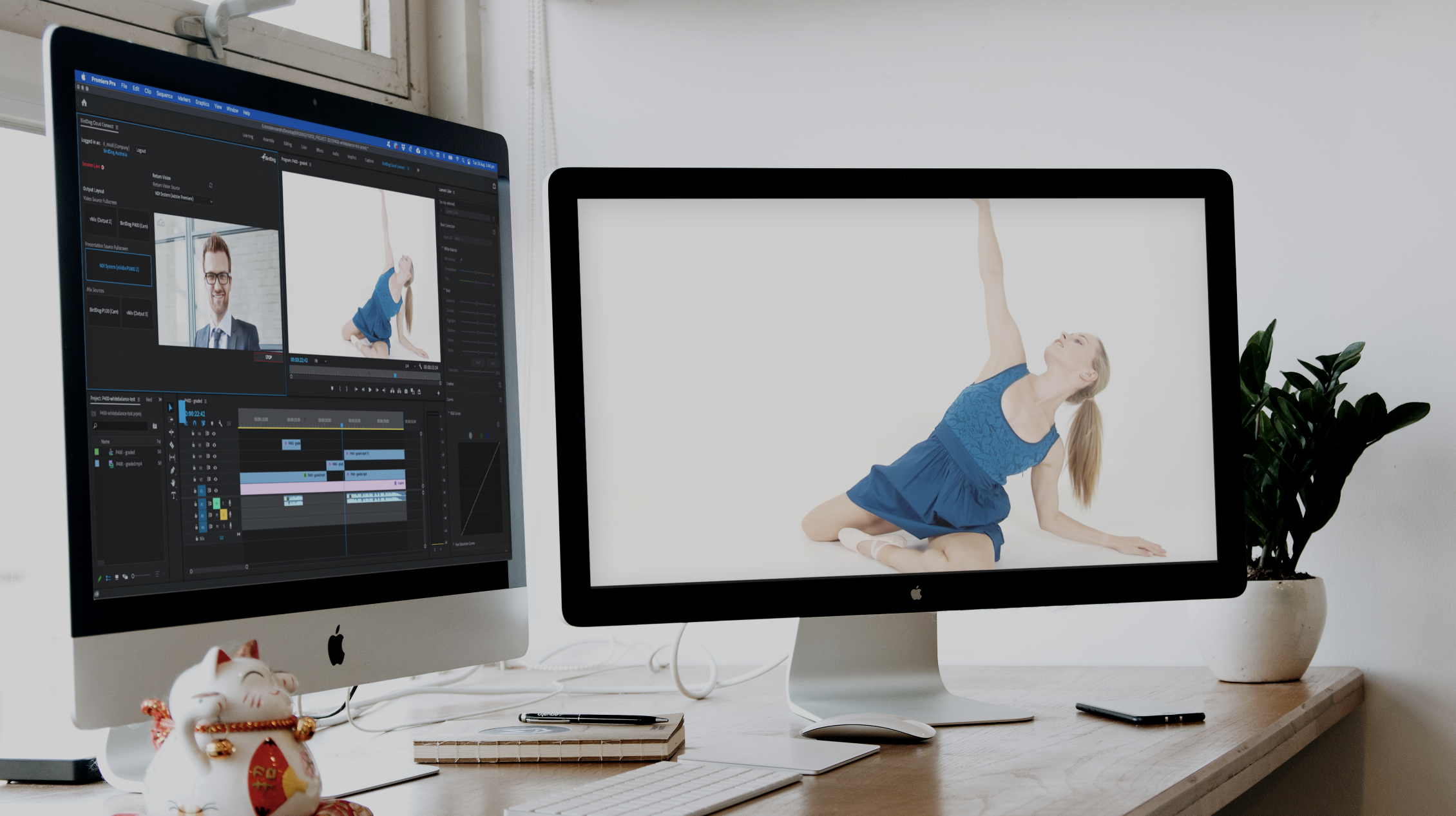
Andrew: In short, yes. But this shift is fundamentally driven by economics. Processors have been rapidly advancing due to the economies of scale in computing. It was only a matter of time before it became more cost-effective to rely on general-purpose processors for video processing instead of dedicated ones. The cloud migration and everything associated with it are manifestations of this shift towards software and the affordability of processing. NDI aimed to address the challenge of interconnecting these components. This problem was bound to be solved, and I saw an opportunity for us to be at the forefront. The overarching trend is the shift to software, the cost-effectiveness of processing, and the ubiquity of network connections. Everything else is a byproduct of these factors.
NDI and Latency: Balancing Precision and Synchronization
Philip: One concern that professional broadcasters often raise is latency. If I’m not mistaken, earlier versions of NDI didn’t support a timing protocol, though this changed with version 5.1. Dan, did you encounter resistance due to concerns about latency? While NDI inherently has minimal latency and cloud-based solutions introduce some delay due to h.264 compression and SRT, did customers initially express concerns about a frame or two delay? Or did the ease of use with NDI solutions outweigh these concerns?
Dan: That’s an insightful question. Often, people conflate latency and sync, but they’re distinct issues. While some are concerned about latency, especially when there’s a live screen backdrop, it’s crucial to minimize it. We’ve developed techniques to optimize NDI’s speed. In some scenarios, NDI can even outpace SDI, especially when SDI has to cover long distances, introducing latency. But the more pressing issue is synchronization, both between audio and video and across multiple cameras. We’ve invested significant effort in addressing this in the cloud space. Our focus isn’t just on creating devices that convert SDI to NDI but on crafting comprehensive solutions for productions or conferences. Our software stack incorporates advanced features to maintain sync. As you mentioned, when broadcasting to platforms like YouTube or OTT, the primary concern isn’t latency but ensuring video streams are synchronized. We’ve developed solutions to send multiple video streams down a single path while retaining sync, facilitating cloud-based production. Challenges exist, but they often inspire innovative solutions.
Accessibility and NDI: Empowering Content Creators
Philip: As I delved deeper into NDI and engaged with various vendors, I noticed its potential to streamline implementations. A standout feature is the single stream key fill, eliminating the need for separate key and fill streams. The power-over-ethernet (PoE) capability further simplifies the setup. What are the primary motivators for your customers to embrace NDI? Beyond cost considerations, are there specific technological features, like the single key fill or PoE, that are accelerating its adoption?
Andrew: The simplification certainly plays a significant role in NDI’s success. When we introduced our first product, its PoE-powered feature was quite unique. In a broadcast facility, you might think of a 7-fiber cable, which is expensive and requires a lot of supporting equipment. However, an internet cable can serve a similar purpose, carrying audio, video, control, tally, and more—all through one single cable. This dramatically simplifies the broadcast setup, making it more nimble and approachable. For those aiming to produce content that has the essence of a broadcast, this simplification allows them to focus more on the creative aspects. The approachability of NDI has been a key to its success. The fact that it’s designed to work seamlessly, almost like magic, has been a catalyst for its widespread adoption. Broadcasters can now involve less technically skilled individuals in some productions, and those entering the production field can elevate their work without being bogged down by technology or costs.
Philip: Andrew, you wanted to add something?
Andrew: Yes, I believe Dan highlighted some crucial points. To me, the essence of NDI is its accessibility and ease of use. In my home, I can easily connect a PTZ camera and a tricaster to our local network. Anyone watching this could do the same. Even with my knowledge of computers, I couldn’t achieve this with 2110. But for the general public, this ease of use is paramount. It shifts the focus from the technology to the content being created. The onset of COVID-19 brought a significant change to the industry. We transitioned from relying heavily on technology to emphasizing content. I recall a conversation with someone from a major US TV station.
They had challenges with NDI, but when the pandemic hit, the priority shifted from resolving those technical issues to ensuring the safety of their staff. This shift in perspective led to a realization that shows could be run remotely, like we’re doing now, focusing on content quality. NDI, among other technologies, facilitated this transformation, changing the way TV is produced for the better. As Dan mentioned, the trend is clear, and as we evaluate future technologies, we should prioritize those that support this direction.
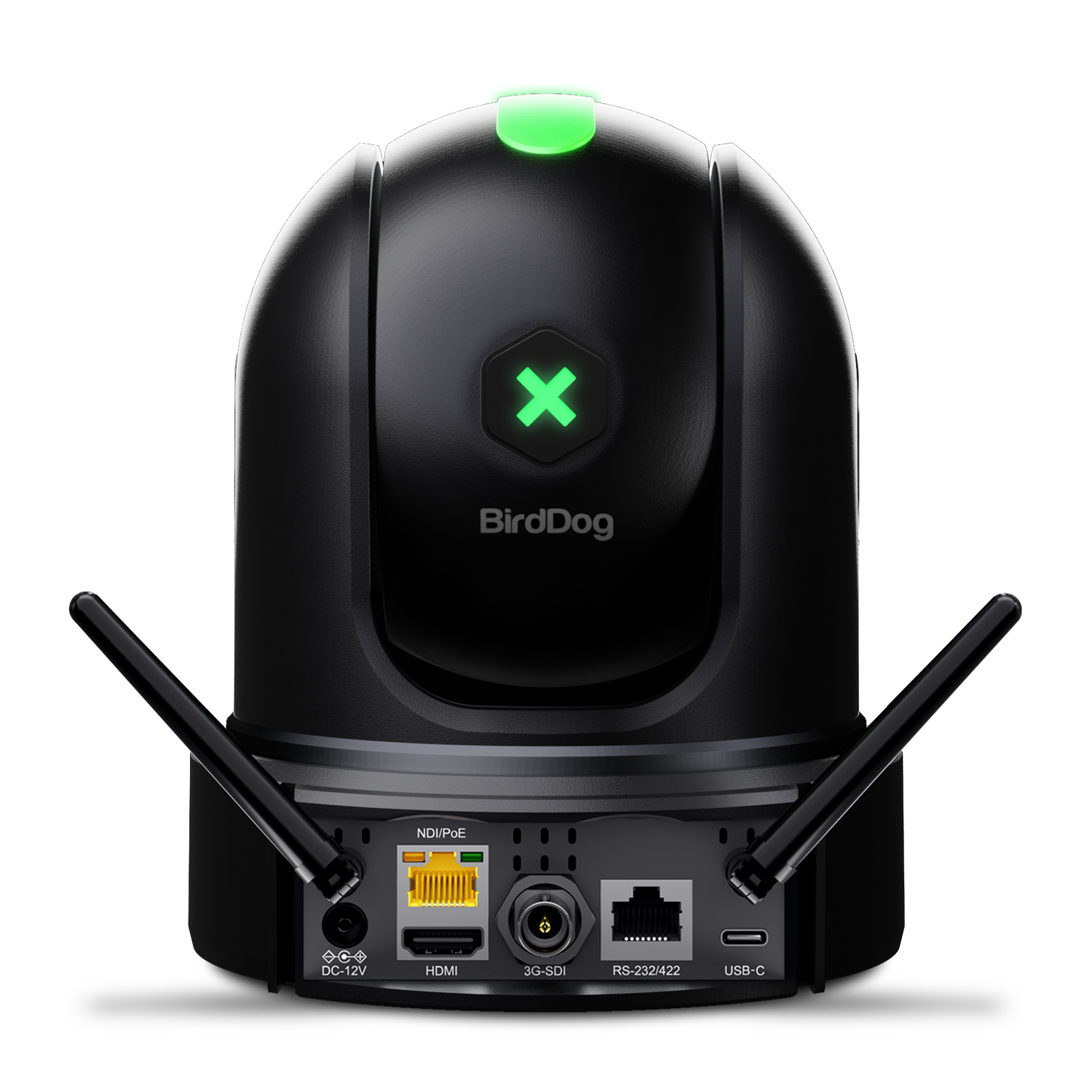
Philip: I think I might be familiar with the three-letter station you mentioned. I’ve collaborated with them and was quite impressed with their NDI implementation. Andrew, regarding the NDI standards, are you still involved? As you observe its progression, do you agree with its current direction? As its founder, do you ever feel the urge to intervene and suggest changes, or are you content with its trajectory?
Andrew: Let me put it this way: my oldest daughter recently left for university. It was an emotional transition for me. NDI feels similar. I’ve moved on from NDI, and it’s heartening to see it in the hands of different people. It’s matured and can stand on its own. I trust it to navigate its path, much like I trust my daughter. We have a fantastic team overseeing NDI, and it’s not my place to critique them, just as I wouldn’t judge my daughter’s choices. She’s incredible, and so is NDI. It was time for me to let go, and that’s beneficial for NDI. I have utmost trust in the team, and I believe they’ll achieve remarkable things.
Philip: That’s a wonderful perspective. Dan, when conducting a remote broadcast, the conventional approach involves using h.264 and a transport like SRT or RIST. NDI seems to eliminate the need for these steps. How does NDI function over public internet? For instance, if I wanted a simple setup where my father, who lives 25 miles away, has a receiver and I have a camera, enabling us to have a conference call using NDI, how would it operate over the public internet?
Dan: Indeed, like with many things, there are multiple answers to that. NDI, being network-native, is designed to work on a broader set of networks. However, transitioning over public internet introduces another layer of complexity, especially concerning routing and bandwidth quality. NDI has a built-in bridge application in its tools, allowing any NDI source to be transported elsewhere. Our BirdDog cloud system, built on top of this, further extends this capability. While transport formats like SRT or RIST are excellent, they merely transport video from one place to another. They don’t facilitate television production. With NDI, and the software stack it offers, you get bi-directional connectivity. It’s akin to having one cable that provides power, audio, video, and tally. Over the internet, this software stack ensures one connection delivers audio, video, control, tally, and more. This holistic approach of NDI, which encompasses all components of audio and video, allows for comprehensive control. Whether it’s adjusting a camera in someone’s living room or managing a TV production, NDI facilitates truly remote operations.
Philip: Andrew, I often draw parallels with Apple’s strategy of introducing their products in schools. This familiarizes students with Apple, and as they transition into professionals, they carry that preference into the corporate world. NDI has made television broadcasting highly accessible. I learned about NewTek and NDI primarily from Leo Laporte. It was enlightening to hear him discuss the NewTek TriCaster and NDI. This accessibility, even for those without deep pockets, allows anyone with a vision to produce television programs. Do you see this as a stepping stone? With many getting introduced to broadcasting through NDI due to its accessibility, do you anticipate a surge in its adoption over time?
Andrew: To be clear, there wasn’t a strategy to target beginners in hopes they’d become professionals. Such a plan would span 15-20 years. The primary goal was to simplify video production. Whether you’re at a major TV station or a small sports league, the mission is to produce great entertainment for viewers. While some might emphasize technical specifications like HDR or latency, the ultimate goal is content creation. Making this process easier benefits everyone. That was our driving force. Any other outcomes were side effects of this primary focus. Looking back, we had our successes and failures, but that was our guiding principle.
Philip: I wholeheartedly agree with your perspective. In the past, some of my clients were overly concerned about latency. For instance, one insisted on having less than a frame and a half of latency on their multi-viewer. I kept emphasizing that they couldn’t possibly press a button quickly enough to notice such a minor delay. It’s intriguing how discussions about timing and sync have evolved. While synchronization remains crucial, timing standards have become more lenient with advanced technologies like NDI and 2110. In the analog era, timing precision was in microseconds to ensure color alignment. Now, we’re discussing milliseconds or even multiple frames. Especially in the Remi broadcasting environment, do you think people are becoming less concerned about precise timing, as long as everything remains synchronized?
Dan: To a degree, the primary concern is synchronization. For Remi broadcasts, maintaining a level of latency that allows for natural conversation is essential. There’s a limit to how much delay can be tolerated. In many ways, timing standards have become more relaxed. A frame, which is 16 milliseconds, might seem like an eternity in computing terms, but it’s incredibly fast for human reactions. Timing remains a crucial aspect of broadcasting. NDI’s first version, given the software and hardware available at the time, had relatively low latency—close to a couple of frames. As technology has advanced, this latency has reduced. Improved network management means that NDI can now offer extremely low latency, comparable to SDI or 2110. For Remi productions, it’s vital to maintain a latency of less than two seconds round trip over the public internet to facilitate coherent conversations. Otherwise, you’d need a highly skilled individual on the receiving end to manage the conversation effectively.
Andrew: This is a complex question. To begin, let me provide a numerical perspective. Technically, NDI’s latency isn’t constrained by anything other than the processing speed of the computers involved. It’s never about network speed; networks are incredibly fast. If you have a pre-compressed video signal, NDI could probably transmit it with a latency of about two milliseconds between two computers. So, it could be extremely low, even lower than traditional video, as Dan mentioned. However, compression takes time, which adds to the latency. In the audio world, we’ve been mixing for decades. When you connect a microphone, it just works. No one in audio ever worried about timing. So, my initial reaction is to question why we even need to consider timing in video. Our goal as technology creators should be to eliminate the need for users to think about timing. While there are specific scenarios where timing is crucial, with NDI, our mission was to make it so users rarely, if ever, have to consider it. Only in a few cases, like live productions, is low latency essential for interactive communication. But for the vast majority, the focus should be on eliminating the need to think about timing.
Philip: I believe that the 1% where timing is crucial is in sports broadcasting. Especially in projects involving sports betting, latency needs to be minimal. But that’s a niche scenario.
Andrew: Precisely. It’s mainly relevant for the stock market and sports betting.

Philip: Which, in many ways, operates similarly.
Andrew: I won’t comment on that, but you’re spot on.
The Growing Trend: NDI Integration in Camera Systems
Philip: Dan, considering your company produces excellent hardware and cameras, are you observing a trend? Few cameras currently have SMPTE 2110 built-in, but it’s starting. Given that NDI is software-oriented, do you see it becoming a standard feature in cameras? I always advocate for a versatile toolkit. Are manufacturers adopting NDI more widely, replacing HDMI with an NDI interface?
Dan: Absolutely, the answer is yes. We make cameras and naturally want people to buy ours. But it’s up to us to make a product that people want. More vendors are adding NDI to their products, which is great for accessibility. Depending on one vendor is risky. All the big names have NDI in their cameras in some way. There are also other cameras coming out for different price points. We haven’t seen anyone brave enough to remove the HDMI or SD connectors yet, but I think that might change in the next few years.
NDI’s Transition to Mainstream: Adobe Premiere and Beyond
Philip: Apple removed the headphone jack and faced a lot of backlash. But it set a trend. I’m impressed with NDI’s software focus. With the move to 2110, we’re using high-end switches instead of big hardware and specific software. This has allowed more vendors to get into the market. Are you seeing a similar trend with NDI? When software like Adobe Premiere adds NDI, it shows it’s becoming mainstream. Is this happening more often?
Andrew: Yes, NDI’s broader adoption is clear. It’s interesting to see it used in unexpected places. Like when we found out a casino was using NDI for video routing or when city signs with big LED displays used NDI. These uses show that NDI is catching on by itself. It’s exciting to see NDI used in new and creative ways. Dan has even moved into the medical world with NDI, which we never thought of when we started. It’s exciting to see businesses built around it. It’s clear NDI has grown beyond what we imagined.
TV and Monitor Manufacturers: NDI Integration as the Next Trend
Philip: It’s interesting. I spent some time in the hotel industry, and one focus was digital signage. Initially, it was centralized with coax cables to the screens. Then, we transitioned to IP, but each screen needed a separate box. Regarding major TV manufacturers, there’s a joke that no one will add a 2110 input to a TV, just as no one added an SDI input to monitors. Instead, we always used converter boxes. Have we seen any TV or monitor manufacturers support NDI natively? Will we see that trend?
Andrew: Yes, some manufacturers are moving in that direction, though I can’t recall specific names right now. When I left, we were collaborating with a few. Most modern TVs come with an ARM CPU and a network connection, which are the only prerequisites for NDI. It doesn’t require additional hardware. While integrating something like 2110 into a TV is challenging, adding NDI is mainly a software task. That was always our goal with NDI, setting it apart from other standards.
Philip: Dan, as I understand, your company produces converters that can transform standard SDI or HDMI signals into NDI, simplifying the entire process. Are many other manufacturers doing the same? I’ve seen many of your products at events like NAB and IBC. With IBC coming up, I’m eager to see more. Are these converters becoming more common? The software-centric nature of NDI seems like a significant advantage.
Dan: The answer is both yes and no. Several vendors offer converters, providing users with choices. Our encoders, for instance, can take HDMI or SDI inputs and integrate them into a network, ensuring low latency. On the distribution side, especially in contexts like hotels or screens, we’ve collaborated with vendors like NEC. They’ve developed commercial displays with native NDI support. This means you can simply hang a screen, connect it to the network, and you’re set – no additional boxes required. This is a significant advancement. While hardware converters are essential, software plays a pivotal role too. As Andrew mentioned, we’ve developed Android apps with native NDI support. This allows smart TVs to connect directly to an NDI source without any additional conversions. So, the concept of a converter is evolving, and with NDI, it can be either hardware or software.
Philip: Are major manufacturers like Evertz, ViZrt, Imagine, and Grass Valley developing solutions to bridge NDI and 2110? Is there a trend towards integrating these two technologies?
Andrew: Absolutely. Many have products that facilitate this. For instance, with the right capture card, you can easily transition between NDI and 2110. Grass Valley supports both standards, making transcoding between them straightforward. Evertz has similar capabilities. NDI’s widespread adoption means transitioning between standards is relatively simple. NewTek even has a product designed specifically for this purpose. In essence, anyone with the right tools and knowledge could set this up. If there’s a gap in the market, it’s an excellent opportunity for innovators. NDI’s primary goal was to simplify video transport, allowing creators to focus on developing innovative tools. This approach can lead to exciting advancements in the video industry.
4K Broadcasting and NDI: A Cost-Efficient Solution
Philip: One clear advantage of NDI is its ability to handle 4K efficiently. With 2110, 4K doesn’t fit well within a 10-gig connection, necessitating at least a 25-gig connection. But with NDI, you can transmit a 4K signal over a 1-gig connection. Dan, are we seeing businesses adopt NDI for 4K broadcasting to avoid investing in 100-gig switches?
Dan: Absolutely, Philip. Infrastructure is a significant concern. Consider the sports trucks or OB trucks. Implementing 4K production in the field using traditional methods requires a massive investment. Achieving this with NDI is far more feasible. We’re observing two primary perspectives on 4K. Some believe 1080p suffices, especially when the content is streamed over the internet. However, others are adamant about 4K, especially when they desire high-quality production within a specific budget. As you mentioned, from an infrastructure standpoint, managing 3G-based SDI signals on a 10-gig network is relatively straightforward. But scaling up to 4K introduces technical complexities.
HDR Support in NDI: The Future of High-Quality Video
Philip: Does NDI support HDR, including its various formats? Is it encapsulated within the NDI signal?
Andrew: Yes, NDI does support HDR. However, upcoming versions of NDI will offer even more native support for HDR. I’d like to revisit the topic of compression. Our industry often misunderstands its value. Let’s draw a parallel with the automotive industry. Suppose there’s a new car technology that offers ten times the fuel efficiency, but reduces the top speed by 10%. It’s a game-changer, right? That’s precisely what compression does for video. It provides a 10-to-1 advantage. Instead of focusing on minor quality reductions at specific resolutions, we should appreciate the newfound capabilities compression offers. It enables us to achieve feats like 4K or even 8K and 16K broadcasting on networks that previously struggled with 1080p. Embracing compression, much like the hypothetical fuel efficiency improvement, can revolutionize our industry.
Philip: I completely agree. Someone once likened it to the transition from CDs to MP3s. While not meant in a derogatory sense, everyone listens to compressed audio now. It’s challenging to discern the difference in quality. Instead of carrying around a spinning disc, we have hundreds of files on our phones. The quality isn’t just “good enough”; it’s excellent. Most people can’t tell the difference. Perhaps NDI will pave the way for this shift, as you mentioned, Andrew. By enhancing efficiency and only slightly compromising on quality—a difference most can’t perceive—the value proposition becomes increasingly evident in production.
Andrew: Your comparison is spot on. Today’s audio landscape is dominated by platforms like Spotify and Apple Music, not by storing MP3 files on our devices. At least, that’s how I and many others operate. This shift in music consumption was made possible by compression. If we had clung to CDs, which offer marginally better quality, this transformative change wouldn’t have occurred. We must recognize that such technologies are disruptive and will instigate change, whether we’re on board or not. If we don’t leverage these advancements, others will. While there are trade-offs, like MP3s being slightly inferior to uncompressed formats, it’s the MP3s that revolutionized the world, not the uncompressed formats.
NDI’s Role in Virtual Sets and AI-Driven Broadcasting
Philip: Precisely. Now, with the rise of virtual sets, virtual studios, and volumetric spaces, are we seeing NDI being integrated or embraced in these domains?
Andrew: NDI is undoubtedly prevalent in these areas. However, I’d like to make a bold assertion. I don’t believe virtual sets represent the future. Instead, AI, particularly generative AI, will reshape broadcasting. This innovation will redefine how we approach broadcasting. Virtual sets might seem like a more affordable yet less effective method, but the real game-changer will be AI-driven solutions.
Philip: Dan, are you seeing a surge in the adoption of NDI within virtual sets? Given that AI is poised to be the next big thing, is NDI being integrated and embraced in these areas?
Dan: Absolutely, Philip. As both of you highlighted, there’s a significant push towards AI and mixed and virtual reality. Speaking of mixed and virtual reality, NDI’s built-in control protocol is a game-changer. With NDI, every frame can carry associated metadata, which aligns perfectly with the concept of volumetric spaces. This means we can embed coordinates and other essential data, facilitating mixed reality productions. So, NDI is not just compatible with this domain; it’s tailor-made for it. Many are leveraging NDI in this space, and our products support these endeavors in various capacities.
Regarding the AI trajectory, I’m in complete agreement with Andrew. The essence of broadcasting is its widespread reach. While we’ve discussed the ease of transporting data from one location to another and the shift from a hub-and-spoke model to a more interconnected web, the production center remains the core. The future of broadcasting isn’t about adding more mixers or desks; it’s about integrating AI and smarter embedded systems. Regardless of whether we use NDI or 2110 for transport, the real evolution lies in how productions are executed. AI-driven “autopilots” will be pivotal in enhancing production quality and efficiency.
The Future of NDI: Andrew Cross’s Vision
Philip: Well, we’re nearing the top of the hour, and this has been a fantastic conversation. I’ve learned so much. Andrew, being the Father of NDI, where do you see it heading in the next 18, 36, 48 months? What’s your vision for its adoption and usage?
Andrew: I might surprise you by saying that I want NDI to become almost unnoticed. We aim to revolutionize video, and to do that, we need to shift from thinking about connectivity to focusing on the tools used for creation. With advancements like AI, which is fundamentally software, we need a seamless way to integrate video. I believe NDI is well-positioned to be that solution. There’s nothing currently that matches its capability in addressing these challenges. I’m optimistic about the future. I think in five years, we’ll look back and realize how much has changed. Whether it’s NDI or another technology leading this transformation, I’m confident in the direction we’re headed.
Bird Dog’s Strategies for NDI: Integration Across Industries
Philip: That’s insightful. Dan, what about you? Where do you see the trajectory for NDI and BirdDog? What’s guiding your strategies?
Dan: Focusing first on the broadcast production side, I think of Apple’s evolution in iOS design. They moved from a material design that mimicked real-world textures to something more modern. In production, the excitement isn’t just about replacing old hardware with equivalent software. It’s about creating new methods that yield different outcomes. As I mentioned earlier, AI will play a significant role in reshaping broadcast production. NDI is perfectly positioned to support this, acting as the bridge for these AI systems.
From BirdDog’s perspective, the goal is to integrate NDI into more domains. While this might seem a bit tangential to our current discussion, Andrew briefly touched upon our significant advancements in the medical industry. While it might not be immediately apparent as a video-centric field, we’ve made substantial strides there. The ability to remotely access multiple sources, akin to what we discussed about the BRAIN, can be revolutionary, especially for professionals like neurosurgeons. We’re exploring similar opportunities in other industries as well. As a company, our aim isn’t to diversify into countless products but to see how our existing technology can be extended further. The principles of broadcasting are applicable to the medical field, AV industries, and education. The challenge lies in managing the ever-increasing sources to deliver the right content at the right time to the right audience. Currently, we’re in a transitional phase. While we’ve moved past traditional cables and embraced software, our production methods remain largely unchanged. I share Andrew’s sentiment and anticipate that in the future, we’ll look back and marvel at how archaic our current methods seem.
Philip: It’s great to see some audience members joining us. If anyone has questions for our panelists, please feel free to ask. I believe Mitchell has a question. Mitchell, please go ahead.
Mitchell: Thank you, Philip. I’ve been extensively working with 2110 recently, and I have a question for Dan. Are there any plans, either from BirdDog or any other company, to introduce a converter that transitions from NDI to 2110 and vice versa?
Dan: That’s a logical progression. I noticed you have one of our user interfaces on your screen, which is great to see. As Andrew mentioned, there are capture cards that support 2110, which can be converted to NDI. When it comes to hardware converters like the ones we produce, I believe there will be a tipping point where such a transition becomes more feasible. Instead of multiple SDI connectors, we might see interfaces that support both 2110 and other formats. Converters are inherently designed to facilitate such transitions. As these formats gain more traction, it becomes imperative to support such connections. While I don’t have any official announcements to make at this moment, I believe it’s an inevitable development.
Mitchell: That’s good to hear because my other option is to build one myself, and I’m not really keen on that. So, having an existing solution would be fantastic. Thanks.
Dan: I started from scratch, so I can tell you it’s quite a journey to build a product. But if you’re up for it, that would be impressive.
Mitchell: I don’t think my wife would appreciate that venture.
Philip: Thank you, Mitchell.
Philip: Davey, did you have a question? Please go ahead.
Davey: I’ve been in this field for about five years, previously working as a sound engineer, which is why I brought up the MP3 comparison. The main resistance I’ve observed in the broadcasting world, where I’ve worked for almost 39 years, is towards NDI. It’s often dismissed as unimportant. It’s unfortunate, but I believe cost-effectiveness will eventually win out. Production teams I’ve collaborated with are keen on using it due to its affordability. However, the technical teams remain loyal to major manufacturers, especially Sony. The cost difference between traditional equipment and NDI is staggering. We now cover hundreds of football matches annually, a feat only possible due to NDI’s cost-effectiveness. Previously, with traditional equipment, we could only cover a handful. The transition to NDI is inevitable, but it’s taking longer than expected.
Andrew: There will always be scenarios where traditional methods are preferable, and that’s okay. As vendors, it’s our responsibility to recognize and understand these situations. It strengthens our perspective. If there’s a setting where a Sony switcher or SDI or 2110 is more appropriate, we need to understand why. It’s an opportunity for growth and improvement. I’m always curious to know why NDI might not be the first choice in certain situations. Embracing diversity and offering choices to customers is crucial, even if it doesn’t always align with our product.
Philip: Dan, Andrew, thank you both for your insights today. As my wife and I plan our retirement home, I intend to integrate NDI throughout, even if it’s just for personal use like TV and communication with family. I appreciate your time and expertise. If either of you will be at IBC, I’d love to meet up and perhaps buy you a beer.
Dan: I’ll be at IBC, and I’d be happy to return the favor with a beer.
Philip: Perfect! Thank you both for joining us. We’ll be back next month with another edition of TKT Visionaries.
The online roundtable, Visionaries, delves into the most impactful and technically complex projects within the TV and film industry across the North American continent. Visionaries is represented by its key expert, Philip Grossman, an independent advisor who offers thought leadership and solutions architecture to leading film and television industry professionals and organizations in the United States.
The digital dialogue titled ‘Visionaries’ delves deep into the global TV and film sector’s most transformative and technically intricate projects.
Central to ‘Visionaries’ is the renowned expert Philip Grossman. Serving as an independent consultant, Grossman delivers strategic insights and architectural solutions to top-tier film and television professionals and establishments in the USA. Perfect for those keen on grasping the trajectory of modern broadcast technology.
The event was organized by TKT1957.com, TKT1957 LLC.
Upcoming Event
